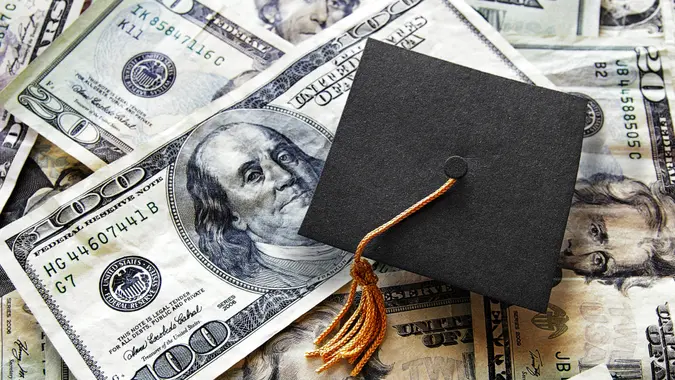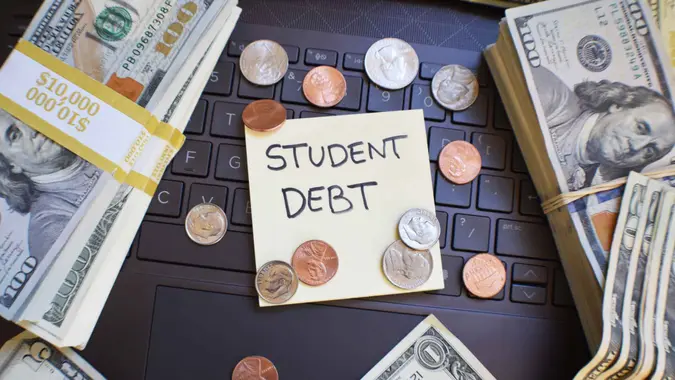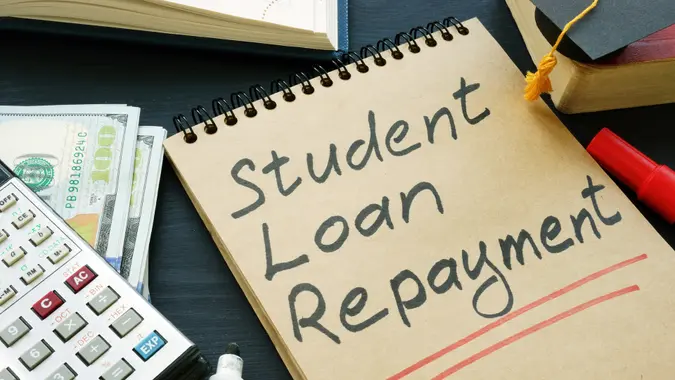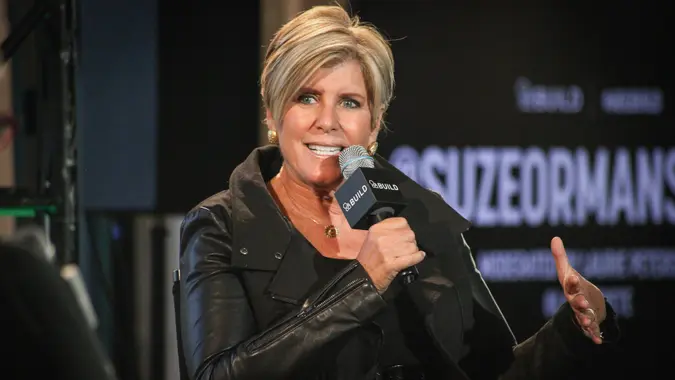Student Loan Forgiveness: Biden To Cancel Debt For Certain Borrowers — Here’s the Catch To Qualify

Commitment to Our Readers
GOBankingRates' editorial team is committed to bringing you unbiased reviews and information. We use data-driven methodologies to evaluate financial products and services - our reviews and ratings are not influenced by advertisers. You can read more about our editorial guidelines and our products and services review methodology.

20 Years
Helping You Live Richer

Reviewed
by Experts

Trusted by
Millions of Readers
The Biden administration announced on Jan. 12 that it would cancel further debt — months ahead of schedule — for certain borrowers who have enrolled in the Saving on a Valuable Education (SAVE) plan.
“I am proud that my Administration is implementing one of the most impactful provisions of the SAVE plan nearly six months ahead of schedule,” President Joe Biden said in a statement on the White House website. “This action will particularly help community college borrowers, low-income borrowers, and those struggling to repay their loans,” he added.
The Department of Education stated that borrowers enrolled in SAVE who are eligible for early forgiveness will have their debts cancelled starting next month, with no action on their part, according to a press release.
In addition, the Department said it was launching an outreach and email campaign to encourage borrowers who are not currently enrolled in SAVE to sign up, because they may benefit from this shortened repayment period.
“Borrowers should carefully review their eligibility for the program. This announcement’s goal is to help low balance borrowers to pay off their debt as soon as possible,” said Dror Liebenthal, CEO and co-founder of Bold.org.
Who Is Eligible For SAVE Plan Debt Reduction?
Borrowers enrolled in SAVE who have made at least 10 years of monthly payments — and originally took out $12,000 or less for undergraduate or graduate postsecondary studies — are eligible for forgiveness. For every $1,000 borrowed above $12,000, a borrower can receive forgiveness after an additional year of payments.
“That means a borrower who originally borrowed less than $21,000 will be eligible for forgiveness faster than the 20-year timeline for undergraduate borrowers on SAVE,” the Department said in the release, adding that it was accelerating this benefit months ahead of the date previously laid out for implementing the SAVE plan, which is July 1, 2024.
As of January, there are 6.9 million borrowers enrolled in the SAVE Plan — more than double the enrollment on the Revised Pay As You Earn (REPAYE) plan it replaced in August.
“This effort seems relatively simple and beneficial to many,” said Jay Zigmont, PhD, CFP and founder of Childfree Wealth. “The key behind this new forgiveness program is that it is based on the initial amount borrowed, not the current loan amount. For people on an income-based repayment program, it is common that their current balance may be higher than their original loan, even after making a decade of payments.”
As Zigmont noted, the initial outline is that the program will forgive loans where less than $12,000 was borrowed and 10 years of payments were made. If your initial loan was over $12,000, you will need an extra year of payments for each additional $1,000 borrowed.
“It will be interesting to see which payments are ‘counted’ or not. The Biden administration has been very lenient in counting payments with other programs, but certain forbearances or missed payments will likely not count,” he said, adding that as an added benefit, this program should be federally tax-free. However, it may be taxed as income in some states.
More From GOBankingRates
 Written by
Written by  Edited by
Edited by 

























